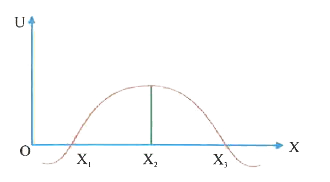de Broglie wavelengths of two particles A and B are plotted against (1√V) , where V is the potential on the particles. Which of the following relation is correct about the mass of the particles ?

mA=mB
mA>mB
mA<mB
mA≤mB
The correct Answer is:B
Step by step video, text & image solution for de Broglie wavelengths of two particles A and B are plotted against (1/sqrtV) , where V is the potential on the particles. Which of the following relation is correct about the mass of the particles ? by Chemistry experts to help you in doubts & scoring excellent marks in Class 12 exams.
Updated on:21/07/2023Topper's Solved these Questions
Similar Questions
Knowledge Check
de Broglie wavelengths of two particles A and B are plotted against (1√V) , where V is the potential on the particles. Which of the following relation is correct about the mass of the particles ?
 AmA=mBBmA>mBCmA<mBDmA≤mB
AmA=mBBmA>mBCmA<mBDmA≤mBThe de Broglie wavelength λ of a particle
Ais proportional to massBis proportional to impluseCis inversely proportional to impulseDdoes not depend on impulseThe de Broglie wavelength λ of a particle
Ais proportional to massBis proportional to impluseCis inversely proportional to impulseDdoes not depend on impulse
Plot a graph showing variation of a de Broglie wavelength (λ) associated with a charged particle of mass m, verses 1/√V, where V is the potential difference thrugh which the particle is accelerated. How does this graph give us the information the magnitude the magnitude of the charge of the particle ?
View SolutionThe de Broglie wavelength associated with particle is
View SolutionThe de-Broglie wavelength of a particle with mass 1g and velocity 100m/sec is.
View SolutionIn the fig. The potential energy U of a particle plotted against its position x from origin. Which of the following statement is correct

View SolutionThe de Broglie wavelength (λ) of a particle is related to its kinetic energy E as
View Solution
